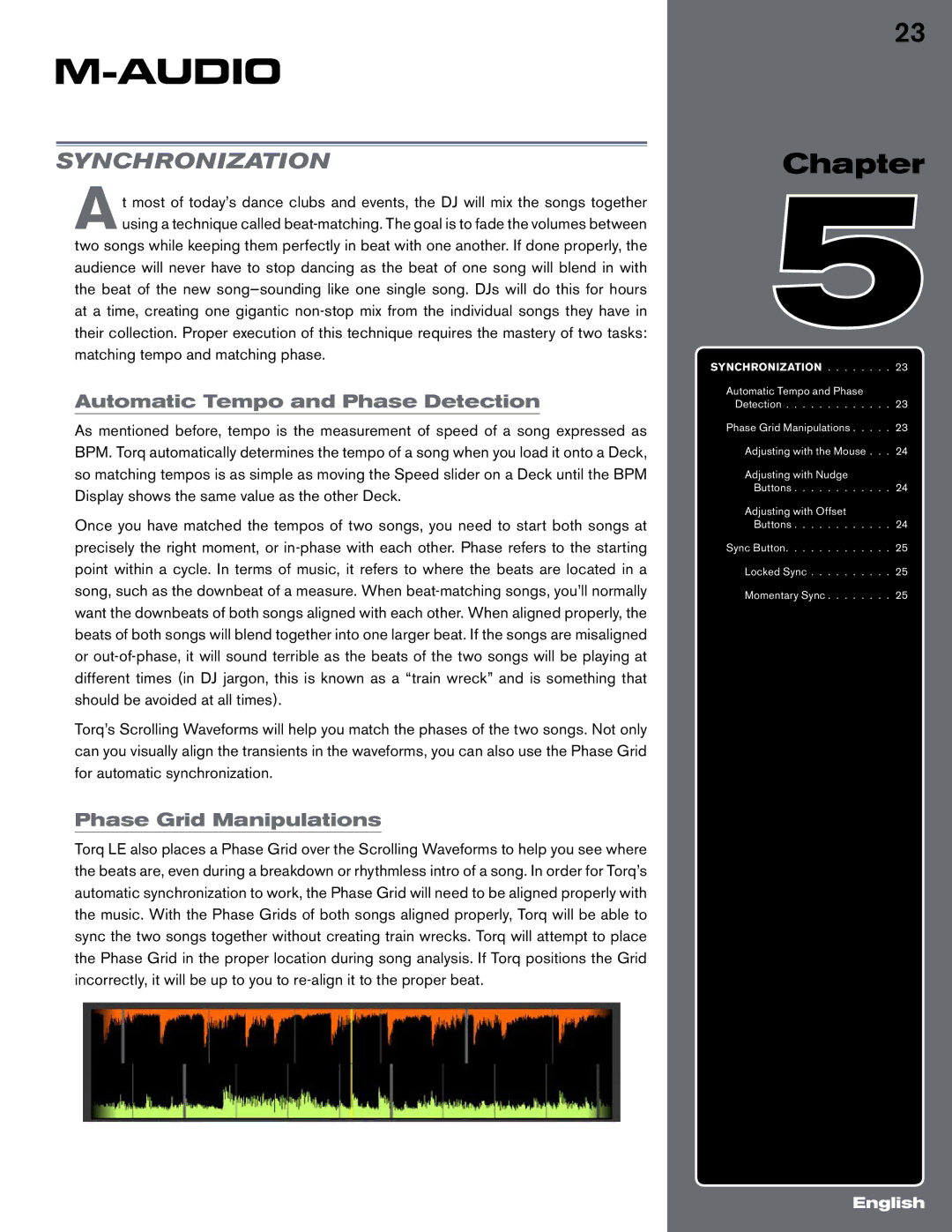
SYNCHRONIZATION
At most of today’s dance clubs and events, the DJ will mix the songs together using a technique called
audience will never have to stop dancing as the beat of one song will blend in with the beat of the new
Automatic Tempo and Phase Detection
As mentioned before, tempo is the measurement of speed of a song expressed as BPM. Torq automatically determines the tempo of a song when you load it onto a Deck, so matching tempos is as simple as moving the Speed slider on a Deck until the BPM Display shows the same value as the other Deck.
Once you have matched the tempos of two songs, you need to start both songs at precisely the right moment, or
Torq’s Scrolling Waveforms will help you match the phases of the two songs. Not only can you visually align the transients in the waveforms, you can also use the Phase Grid for automatic synchronization.
Phase Grid Manipulations
Torq LE also places a Phase Grid over the Scrolling Waveforms to help you see where the beats are, even during a breakdown or rhythmless intro of a song. In order for Torq’s automatic synchronization to work, the Phase Grid will need to be aligned properly with the music. With the Phase Grids of both songs aligned properly, Torq will be able to sync the two songs together without creating train wrecks. Torq will attempt to place the Phase Grid in the proper location during song analysis. If Torq positions the Grid incorrectly, it will be up to you to
23
Chapter
5
SYNCHRONIZATION . . . . . . . . 23
Automatic Tempo and Phase Detection . . . . . . . . . . . . . 23
Phase Grid Manipulations . . . . . 23 Adjusting with the Mouse . . . 24
Adjusting with Nudge
Buttons . . . . . . . . . . . . 24
Adjusting with Offset
Buttons . . . . . . . . . . . . 24 Sync Button. . . . . . . . . . . . . 25 Locked Sync . . . . . . . . . . 25 Momentary Sync . . . . . . . . 25
English
